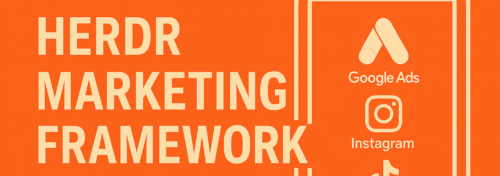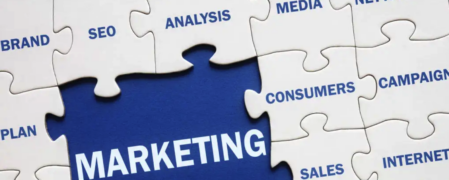Customer Lifetime Value (CLV) Model: Measuring Long-Term Business Success

Customer Lifetime Value (CLV) is a metric that quantifies the total revenue a business can expect to earn from a single customer throughout their relationship. It is a critical concept for businesses aiming to optimize long-term profitability, allocate resources efficiently, and build customer-centric strategies.
In this article, we’ll explore the CLV model, its importance, the factors that influence CLV, methods to calculate it, and actionable strategies to maximize this key metric.
What is Customer Lifetime Value (CLV)?
CLV represents the net value a customer brings to your business during their lifetime as a paying customer. By focusing on CLV, businesses can shift their mindset from short-term gains (e.g., individual transactions) to long-term relationships, enhancing overall growth and sustainability.
Why is CLV Important?
- Informs Marketing Spend: Helps determine how much to invest in acquiring and retaining customers.
- Improves Profitability: Focuses on retaining high-value customers and reducing churn.
- Guides Product Development: Identifies which offerings are most valued by loyal customers.
- Supports Customer Segmentation: Enables tailored strategies for different customer groups.
- Drives Strategic Growth: Encourages a long-term view of customer relationships and loyalty.
Factors That Influence CLV
Several factors impact a customer’s lifetime value:
- Average Purchase Value: The average amount a customer spends per transaction.
- Purchase Frequency: How often a customer buys from your business.
- Customer Retention: How long customers continue to make purchases.
- Customer Acquisition Costs (CAC): The expenses associated with acquiring new customers.
- Gross Margin: The profit margin per transaction.
How to Calculate CLV
There are multiple methods to calculate CLV, ranging from simple formulas to advanced predictive models.
1. Simple CLV Formula
A quick and easy way to estimate CLV:
CLV = Average Purchase Value * Purchase Frequency * Customer Lifespan
Example:
- Average Purchase Value = $50
- Purchase Frequency = 10 times per year
- Customer Lifespan = 3 years
CLV = 50 * 10 * 3 = 1500
The CLV for this customer is $1,500.
2. Profit-Based CLV Formula
A more realistic approach accounts for gross margin and acquisition costs:
CLV = (Average Purchase Value * Purchase Frequency * Customer Lifespan * Gross Margin) – CAC
Example:
- Average Purchase Value = $50
- Purchase Frequency = 10 times per year
- Customer Lifespan = 3 years
- Gross Margin = 60%
- CAC = $100
CLV = (50 * 10 * 3 * 0.6) – 100 = 800
The profit-based CLV for this customer is $800.
3. Predictive CLV Models
Advanced predictive models use historical data, machine learning, and statistical techniques to estimate future CLV. These models account for factors like churn rates, customer behavior patterns, and market trends.
Strategies to Maximize CLV
1. Improve Customer Retention
- Offer Exceptional Customer Service: Provide fast, friendly, and efficient support.
- Implement Loyalty Programs: Reward repeat customers with discounts or exclusive perks.
- Personalize Experiences: Tailor recommendations, communications, and offers to individual customers.
Example: Amazon uses personalized recommendations based on browsing and purchase history to keep customers engaged.
2. Increase Purchase Frequency
- Engage with Re-Targeting Campaigns: Use email or ads to re-engage dormant customers.
- Encourage Subscriptions: Introduce subscription models for consumable products.
- Create Cross-Selling Opportunities: Suggest complementary products or services.
Example: Spotify’s premium subscription service ensures recurring revenue through regular monthly payments.
3. Boost Average Purchase Value
- Upsell and Cross-Sell: Recommend higher-value products or complementary items.
- Bundle Products: Offer packages that combine multiple products or services.
- Offer Free Shipping Thresholds: Encourage higher spending by setting a minimum order amount for free delivery.
Example: Sephora encourages larger orders by offering free shipping on purchases above a certain amount.
4. Optimize Customer Acquisition
- Focus on High-Value Segments: Target marketing efforts at customer groups with higher potential CLV.
- Enhance Onboarding Experiences: Ensure customers see value immediately after their first purchase.
Example: Software companies often offer onboarding sessions or tutorials to help users get the most out of their product, increasing loyalty and usage.
Challenges of Using CLV
- Data Complexity: Requires detailed and accurate customer data.
- Churn Prediction: Estimating when customers will stop purchasing can be difficult.
- Market Changes: Shifts in customer preferences or competitive landscapes can affect predictions.
Practical Example of CLV in Action
Starbucks
Starbucks excels at maximizing CLV through its loyalty program and mobile app.
- Retention: The Starbucks Rewards program encourages repeat visits.
- Frequency: Personalized offers and reminders increase purchase frequency.
- Average Value: Seasonal promotions and upselling strategies boost purchase sizes.
By combining these strategies, Starbucks ensures its customers stay loyal and continue spending over time.
Conclusion
The Customer Lifetime Value (CLV) Model is a cornerstone metric for businesses that want to focus on long-term profitability and sustainable growth. By understanding and optimizing CLV, companies can allocate resources more effectively, enhance customer satisfaction, and build lasting relationships.
Invest in tools and strategies to measure and improve CLV, and your business will be better equipped to thrive in an increasingly competitive marketplace.







